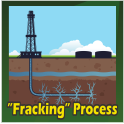38 Million Acre Oil and Gas Lease Sale
WASHINGTON--(ENEWSPF)--. As part of President Obama’s all-of-the-above energy strategy to expand safe and responsible domestic energy production, Secretary of the Interior Ken Salazar and Bureau of Ocean Energy Management (BOEM) Director Tommy P. Beaudreau today announced that BOEM will offer 38 million acres in the Central Gulf of Mexico for oil and gas exploration and development. This sale will build on two major Gulf of Mexico lease sales in the last year – a 21 million acre sale held last December and a 39 million acre sale held in June – and supports the Administration’s goal of continuing to increase domestic oil and gas production which has grown each year the President has been in office, with domestic oil production in 2011 higher than any time in eight years.
“The Obama Administration is fully committed to developing our domestic energy resources to create jobs, foster economic opportunities, and reduce America’s dependence on foreign oil,” Secretary Salazar said. “We are moving full speed ahead on the President’s all-of-the-above energy strategy because the exploration and development of the Gulf of Mexico’s vital energy resources will continue to help power our nation and drive our economy.”
Since President Obama took office, domestic oil and gas production has increased each year, with domestic oil production at an eight-year high, natural gas production at an all-time high, and foreign oil imports now accounting for less than 50 percent of the oil consumed in America – the lowest level since 1995.
Lease Sale 227 encompasses about 7,250 unleased blocks covering approximately 38 million acres. The blocks are located from three to about 230 miles offshore, in water depths ranging from nine to more than 11,115 feet (three to 3,400 meters). BOEM estimates the proposed lease sale could result in the production of 0.46 billion to 0.89 billion barrels of oil and 1.9 trillion cubic feet to 3.9 trillion cubic feet of natural gas.
“This proposed sale is another important step to promote responsible domestic energy production through the safe, environmentally sound exploration and development of the Nation’s offshore energy resources,” said BOEM Director Tommy P. Beaudreau.
This sale will build on successful lease sales that BOEM has held within the past year. Western Gulf Lease Sale 218, held in December 2011, made 21 million acres available, and received high bids on tracts covering about one million acres, netting nearly $325 million. Central Gulf Lease Sale 216/222, held in June 2012, covered nearly 39 million acres, and attracted more than $1.7 billion in high bids for more than 2.4 million acres. The next sale, Western Gulf of Mexico Lease Sale 229, announced earlier this year, will take place in New Orleans on Nov. 28, 2012.
BOEM conducted an extensive environmental review and published a Final Environmental Impact Statement with analysis to support decision-making for proposed Lease Sale 227 and other Western and Central Gulf of Mexico lease sales scheduled under the new Five Year Program. The terms of this sale include conditions to ensure both orderly resource development and protection of the human, marine and coastal environments. These include stipulations to protect biologically sensitive resources, mitigate potential adverse effects on protected species, and avoid potential conflicts associated with oil and gas development in the region.
The proposed terms also continue to include a range of incentives to encourage diligent development and ensure a fair return to taxpayers. In addition, BOEM has implemented a new, streamlined format for sale notices, beginning with this sale, making the document more user-friendly and accessible to the public.
Proposed terms and conditions for the sale are available at: http://www.boem.gov/sale-227. The Notice of Availability of the Proposed Notice of Sale can be viewed today in the Federal Register at: https://www.federalregister.gov/public-inspection. Copies can also be requested from the Gulf of Mexico Region’s Public Information Office at 1201 Elmwood Park Boulevard, New Orleans, LA 70123, or at 800-200-GULF (4853). All terms and conditions for Lease Sale 227 will be finalized when the Final Notice of Sale is published at least 30 days prior to the Sale.
Source: doi.gov
Source: http://www.enewspf.com/latest-news/science-a-environmental/36833-obama-administration-announces-38-million-acre-oil-and-gas-lease-sale-in-the-central-gulf-of-mexico.html








